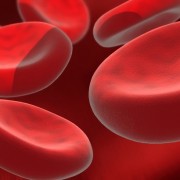Obesity in men – a full-fledged, permanent attack on your body
Previously it was believed that an excess of adipose tissue in the body is just a passive depot of energy, a cosmetic defect and in very rare cases the result of any severe (usually ‘hormonal’) diseases. However, long-term observations of scientists and physicians of the well-being of patients with obesity have shown that obese people are more prone to a variety of diseases in comparison with normal weight people. Today, medical community recognizes that obesity is dangerous. Adipose tissue, lying not just under the skin, but enveloping many internal organs, making their work more complicated. A person with obesity tend to have heart diseases, high blood pressure, joints pain, diabetes and – as a result – reduced life expectancy. Now, obesity is considered as a disease that requires treatment.
Modern researches report of negative tendencies in obesity growth around the world, some of them giving the epidemic status to the disease. The clinical significance of obesity in men is much higher than in women: the disease is less effectively treated with traditional methods, leading to development and progression of cardiovascular disease faster, decreasing the life expectancy in men compared with women by 8-12 years.
How to establish obesity in men

To date, the main criterion for the diagnosis of ‘obesity’ is the waist circumference. To preserve a healthy body (including the reproduction function, the key to which is the normal level of testosterone), waist circumference should not be greater than obesity level – 94 centimetres (or 37 inches); while the waist circumference more than 102 cm (40 inches), oftentimes means a deficiency of testosterone.
Indeed, one of the most noteworthy features of obesity in men is that obesity is always leading to a lack of testosterone. Testosterone – the most important male sex hormone, which determines not only the sexual and social ambitions of men, but also plays a leading role in the clinical picture of obesity in men. Testosterone deficiency supports deposition of excess amount of adipose tissue and decreases the effectiveness of the treatment. In addition, testosterone is responsible for the overall health condition: mood, muscle mass and strength and etc.
This interrelation was confirmed in a variety of studies. Thus, for example, in Norway, the city of Tromsø, scientists have examined 1,548 men. The survey was simple – waist circumference was measured and the level of testosterone was determined. The results were stunning: it turned out that all the men having a waist circumference greater than 102 cm (40 inches), the testosterone level was up to 22% lower.
Complications of obesity
Obesity is considered to be a disease because of a variety of complications it causes. Here’s a quick overview of the most widely spread ones.
- Cardiovascular system: hypertension – high blood pressure during prolonged periods of time time; heart failure – the inability of the heart to fully perform its function; strokes – brain damage as a result of acute stroke; myocardial infarction – the death portion of the heart muscle; varicose veins.
- Metabolism: type 2 diabetes (non-insulin dependent) – violation of carbohydrate metabolism; hyperlipidemia and atherosclerosis – a violation of lipid metabolism; gout – the deposition of uric acid in the joints, kidneys.
- Respiratory diseases: dyspnea – shortness of breath; sleep apnea – periodic cessation of breathing during sleep, combined with snoring.
- Musculoskeletal: arthritis – inflammation and pain in the joints; osteochondrosis.
- Gastrointestinal: gallstone disease – the formation of gallstones.
- Cancer: an increased risk of cancer of the prostate and colon.
Erectile dysfunction is another major issue in obese males: decreased libido, inability to maintain erection and premature ejaculation (know more) are the most common manifestations here. In addition, obesity significantly reduces the quantity and quality of sperm, often to the level of complete sterility (what is also referred to as infertility). Sperm of a person suffering from obesity is more likely to have genetic defects reducing their ability to fertilize an egg.
The development of obesity in teenagers has one more specific and significant risk factor: adipose tissue inhibits the production of testosterone, needed to ‘start’ the process of puberty. And as a result of obesity delayed puberty in boys is oftentimes observed.
Treatment of obesity in men
The basis of the treatment of obesity lies in fundamental changes to eating behavior. Practicing short-term diets is not an option. When, after the diet, the person returns to habitual eating behavior, even without overeating he may gain excessive mass very quickly.
Another key to normal weight is regular and balanced physical activity. It is important not only to limit the flow of energy (i.e., reduce the number of calories consumed), but also to increase its consumption. Walking is the most simple and effective form of exercising that does not require any special equipment and significant efforts. The combination of regular walking and thoroughly adjusted nutrition is a great way to press for optimal weight. Walk at least 30-40 minutes a day, briskly, to a state of fatigue and stick to normal eating behaviour – the first results will become obvious after 4-6 weeks.
However, if you have already changed the eating behavior and even spend plenty of time training at the gym, but see no results, it is likely to be the consequence of a lack of testosterone – the main fat burning hormone.
The presence of testosterone deficiency in men can be defined by the following symptoms:
- sexual dysfunction: decreased libido, erectile dysfunction, ejaculation, infertility);
- psycho-emotional disorders: irritability, nervousness, loss of memory and attention, insomnia, fatigue and need for sleep, depression)
- somatic disorders: increase in the number of adipose tissue, decreased muscle strength and mass, pain in the lower back and joints, breast enlargement (gynecomastia), impaired urination (weak stream, night urgency, frequent urination).
However, in order to diagnose testosterone deficiency, clinical picture is needed to be obtained – pass a hormonal blood tests with the focus on testosterone quantity. If total testosterone level is below 12 nmol/l (and the symptoms above are observed), the physician is likely to diagnose hypogonadism (in other words – testosterone deficiency).
Treatment of obesity in men with testosterone deficiency: evidence-based medicine

It would seem that a rational approach to the treatment of obesity in men with concomitant deficiency of testosterone is clear and implies reduction in the number of incoming calories (this ensures proper nutrition), increase in energy consumption (physical activity), and compensation of testosterone deficiency.
Nevertheless, the need to fill the deficit of testosterone with obesity is still a subject of controversy in some medical circles. Despite the fact that testosterone deficiency is an additional factor supporting obesity and the main reason for the ineffectiveness of diet and exercise, some experts continue to argue that with a decrease in body weight low levels of testosterone issue will be eliminated ‘by itself’ as fat tissue is dealt with. Theoretically it can be true, however, in practice, achieving good results in weight loss without correction of related disorders (namely – testosterone deficiency) is hardly possible.
To date, the most comprehensive from the point of view of clinical evidence, double-blind, placebo-controlled studies involving a large number of patients are conducted. In these studies several groups of patients are considered, the first group is prescribed the and the second group is using placebo drugs. This is how the study on ‘The role of correction of hypogonadism in the treatment of metabolic syndrome in men’ was obtained in Genoa University.
In the study, the purpose of which was to determine whether the normalization of testosterone helps to reduce weight in obese men, involved 170 patients. All of them had an established diagnosis of ‘obesity’ and suffered from testosterone deficiency. All patients were given the same advice on nutrition and increased physical activity. Thus 105 patients received intramuscular preparations of testosterone (testosterone undecanoate), and 65 patients – received placebo.
Sexual Health articles:
Attacking all the male age groups bizarrely. Prostatitis.
Alternative Treatments for Erectile Dysfunction
Peyronie’s Disease – the Causes and Treatment
After 30 weeks it was found that patients who received testosterone in addition to diet and exercise not only significantly reduced waist circumference (an average of 2.5 inches), but moreover, there was a reduction of cholesterol, triglycerides, atherogenic lipids, improve sexual function, general state and the disappearance of depression. Importantly, in these patients decreased concentration of so-called ‘inflammatory markers’, bioactive substances produced by adipose tissue and leading to the development of cardiovascular diseases and their complications.
In their turn, in those who received placebo waist circumference decreased only slightly – by up to 12% on average against the background of those on testosterone pills. Thus, not only normal levels of testosterone were not archived, but also the symptoms of deficiency – sexual dysfunction and depression – were not gone. The indicators of lipids (cholesterol and triglycerides) remained virtually unchanged.
My Canadian Pharmacy Team – http://www.mycanadianpharmacyrx.com










